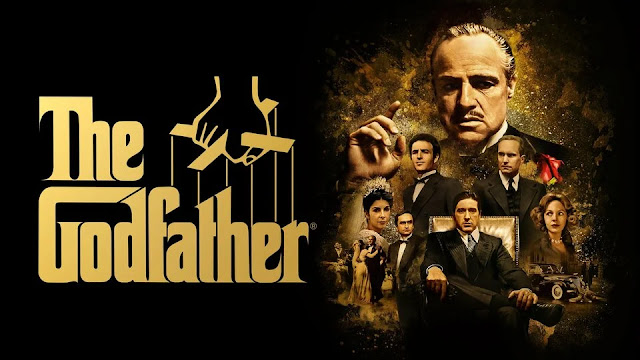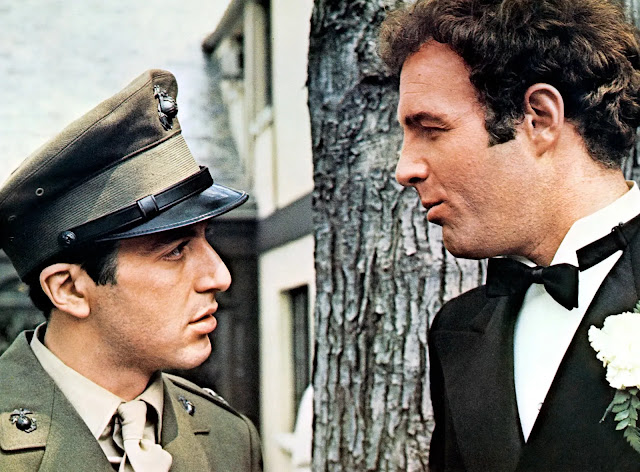An Honest Assessment of the Corleones and All their Glory
Introduction
The Godfather is one of the most iconic films in film history, directed by Francis Ford Coppola and released in 1972. The cast features Marlon Brando as Don Vito Corleone (the head of the Corleone family), Al Pacino as Michael Corleone (Don Vito's eldest son) and Robert de Niro as young Vito Corleone (Michael's father). The movie follows the story of the powerful Italian-American Mafia family, depicting their rise to power through violence and illegal activities. It explores themes such as loyalty, justice, crime and redemption. As a result of its success at awards shows including Oscars for Best Picture, Best Actor in a Leading Role for Brando and Best Writing Adapted Screenplay for Coppola, it spawned two sequels - The Godfather Part II and The Godfather Part III
Themes in The Godfather
The Godfather explores a range of themes, most notably the importance of family honor and loyalty. The Corleone family is built upon these values as they strive to protect their own interests at all costs. This leads to complex relationships between characters that are both supportive and adversarial, with each member striving for power over the others. Even though Don Vito Corleone is the head of the family, he still has his sons Michael and Sonny competing for his respect and attention.
The impact of the Corleones' legacy also plays an integral role in The Godfather. As we learn about their history through flashbacks, we see how their reputation precedes them - no one questions Don Vito's authority or denies his requests due to fear of retribution. He manages not only to maintain power within his own family but also among other Mafia families across New York City, effectively making him untouchable by law enforcement officials until it is too late.
Furthermore, justice is another prominent theme throughout The Godfather series; while some may view Don Vito’s actions as immoral or unethical, he always strives to do what he believes will bring justice within certain situations even if it means resorting to extreme measures such as violence or murder in order to achieve this goal. In addition, redemption plays a significant part in the story – when Michael takes control of the family business after his father’s death there are moments where readers can feel sympathy towards him despite knowing that many actions taken were wrong because he never wanted anyone else close to him get hurt by any decisions made on behalf of himself or those under him during this time period
The Cinematography of The Godfather
The cinematography of The Godfather is lauded for its realism and authenticity, having been filmed in locations such as New York City, Las Vegas and Sicily. This attention to detail ensures that the audience can easily immerse themselves in the world of the Corleone family. In addition to this, lighting plays an important role in conveying a sense of atmosphere throughout different scenes; natural light is used extensively to create shadows and contrast between characters, adding tension or emotion depending on what’s being depicted at any given time.
Furthermore, close-up shots are also utilized frequently throughout The Godfather series in order to emphasize certain emotions or reactions from characters. Examples include Michael’s reaction when he hears his father has been shot (in Part I) and Don Vito's growing anger towards Johnny Fontane (in Part II). These moments help draw viewers further into the story by giving them insight into how each character is feeling at any given moment without relying solely on dialogue for this purpose.
Additionally, slow tracking shots provide a smooth transition between scenes while emphasizing the grandeur of particular settings such as casinos or churches - two principal locations which feature prominently during pivotal points in The Godfather saga. By providing these visual cues it allows viewers to understand better how powerful each character truly is within their own environment – something that could not be achieved with dialogue alone due to its sheer magnitude and importance within the context of the overall narrative arc presented throughout all three films combined.
The Acting Performance in The Godfather
Marlon Brando's performance as Don Vito Corleone in The Godfather is considered to be one of the greatest acting performances in history. His portrayal showed a powerful, wise and intimidating mafia don who maintained an air of dignity and respect throughout the film. He was able to convey his feelings through subtle expressions and gestures rather than relying on dialogue, allowing viewers to connect with him even though he was a criminal. Brando’s performance earned him an Academy Award for Best Actor in Al Pacino and also gave an unforgettable performance as Michael Corleone, Don Vito’s eldest son. Initially portrayed as a naive young man who wants nothing more than distance himself from his family's criminal activities, Pacino shows us how Michael gradually matures into someone capable of taking over the family business while still retaining some sense of morality within this ruthless world. This transformation is shown through both facial expressions and body language which gives audiences insight into what Michael is thinking without having to say too much about it out loud - something that has become synonymous with Pacino's style ever since this iconic role came along.
Robert de Niro also delivers an outstanding performance as young Vito Corleone in The Godfather Part II as we learn more about Don Vito’s past circumstances before becoming head of the Corleone family we see how de Niro captures all those nuances perfectly; from his struggles with poverty-stricken Sicily up until he eventually makes it back home to New York City as a survivor looking for revenge against those who wronged him along the way – each scene provides further evidence that de Niro was born for this role and undoubtedly deserves recognition for making it come alive so convincingly on screen
The Music of The Godfather
Nino Rota’s contribution to The Godfather cannot be understated. His iconic score is one of the most recognizable pieces of music in movie history, and it has been featured on countless soundtracks since its release in
It perfectly captures the themes of loyalty, crime, injustice and redemption that are integral to the story. The main theme features a hauntingly beautiful melody that transitions seamlessly between minor and major keys - emphasizing both Don Vito's power as well as his vulnerability when faced with difficult decisions or emotions that he would rather keep hidden from those around him.
The soundtrack for The Godfather was an instant hit upon its release, becoming one of only three soundtracks (alongside Star Wars: A New Hope and Saturday Night Fever) to reach multi-platinum status by selling over two million copies worldwide. This popularity could be attributed not only to Rota’s incredible compositions but also how effectively they were used within the context of each scene; during moments when tension was at its highest such as the famous ‘Godfather Waltz’ playing during Michael Corleone’s wedding reception or Don Vito speaking directly into the camera while ‘Speak Softly Love’ plays softly in the background – these small elements have become so iconic today due their lasting impression left on viewers who experienced them for the first time almost 50 years ago!
Lastly, The Godfather uses music cleverly throughout all three films in order to enhance certain themes present throughout narrative arc presented across entire saga. For instance when Michael visits Sicily after his father's death he is greeted by a chorus singing traditional Sicilian folk songs which gives the audience sense that even though he may feel out-of-place among surroundings he will still find comfort within the culture itself; this moment speaks volumes about how important heritage can be no matter where someone lives or where they come from originally – something which ties into the idea that family always comes first above else regardless what anyone else thinks.
Conclusion
The Godfather has had a lasting impact on modern cinema like no other. It set the standard for crime dramas and gangster films, with countless movies drawing inspiration from its iconic characters and themes. The trilogy’s influence can be seen in everything from Quentin Tarantino’s Pulp Fiction to Martin Scorsese’s The Departed. In addition to this, the film also played an important role in popular culture as a whole; it was one of the first mainstream Hollywood films to portray organized crime realistically on screen while still retaining some sense of morality despite being rooted in such an immoral world. This is something that resonated with audiences worldwide which helped them connect more strongly with different characters presented throughout all three films combined - making them household names even decades after the original release date!
Finally, The Godfather's legacy lives on today through various mediums including books, comic books, video games and television shows. Whether it's Netflix's Narcos or HBO's Boardwalk Empire – there are countless ways fans can continue exploring Corleone family saga without having to leave the comfort of their own homes. This speaks volumes about how timeless each story told within these three classic movies truly is – something that will likely remain true for many years to come!

















0 Comments